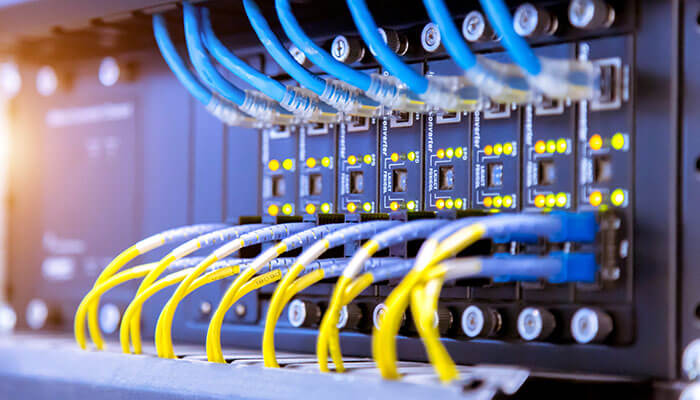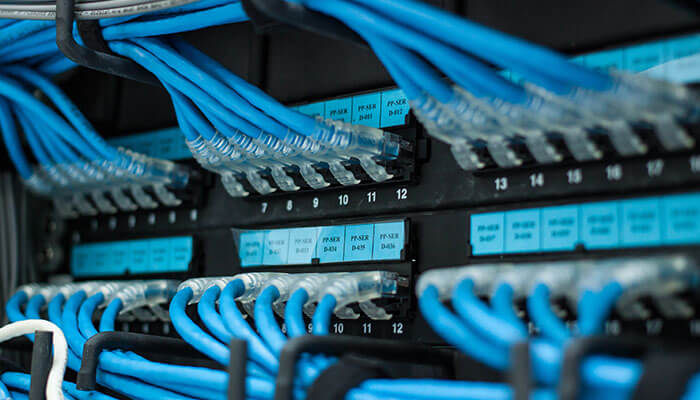In a data center, the 25G SFP28 optical module is often used to link servers and switches. The new Ethernet standard has several benefits, known as the benefits of SFP28. To meet the increasing demand of the next generation of data center networks, 25G Ethernet technology offers the most energy-efficient solution while still maximizing bandwidth and port density.
Physical layer technology
1. This is made possible by its use of 25Gb/s single-channel physical layer technology to achieve 100Gb data transmission.
2. Unlike the SFP28, which only has a single data lane of 25Gbps, the QSFP28 transceiver form factor is built with four parallel 25Gpbs data lanes, allowing for a maximum throughput of 100Gbps.
The 25G SFP28 transceiver has the same physical design as the widely used SFP and SFP+.
Server utilizing 28Gbps
Because 100 Gbps may be split independently into four 25 Gbps connections, this feature offers a versatile option. A top-of-rack switch may connect to a server through SFP28, which utilizes a 28Gbps channel. It’s also worth noting that the 25G SFP28 form factor is obtainable in both copper and fiber optic cable variations, even though there are many transceiver versions.
Input and output performance
1. In the telecommunications business, optics and IP have been viewed as distinct fields for many years.
2. Separate optical lines and IP transponders have had to be installed back-to-back in transmission racks throughout networks, necessitating a specialized skill set as well as the requisite technology.
The ideal input/output (I/O) performance and fiber capacity of the 25G SFP28 optical module is 2.5 times that of 10G Ethernet, and it also has a greater port density, which means it may minimize operational expenses by lowering the number of ToR switches and cables.
Operational and financial costs
Additionally, the exclusive nature of this technology has made it difficult, if not impossible, for network operators to test out new technologies or investigate new vendor solutions without incurring substantial operational and financial costs.
1. And it has a lower loss than 100G optical modules.
2. The 25G SFP28 optical module may also employ two fiber channels to reach 50G data rates.
3. Utilizing a 25G SFP28 optical module is preferable to using 4 10G optical fiber channels to create a 40G optical module.
Wide variety of handling options
1. New systems will be able to expand from 10Gb/s to 25Gb/s utilizing the same slots since SFP28 has the same familiar form factor as SFP+.
2. In comparison to an SFP+ solution, SFP28 modules provide greater impedance control, lower crosstalk, and higher bandwidth. 25G modules will eventually become as affordable as 10G ones as the former becomes more widely used.
High-density and high speed
The extensive selection of small form-factor pluggable (SFP) connectors means they can provide you with a wide variety of options for handling your I/O interconnections, all of which may be tailored to your specific needs. The data transmission rates supported by the SFP portfolio connections go as high as 56G PAM-4 and 28G NRZ. Depending on your system design, PCB size, speed, channel, and port density needs, choose from SFP-DD, SFP28 & SFP56, SFP+, and SFP solutions.
Affordable 25G
By using already-existing module form factors like SFP28 and QSFP28, SFP28 enables a breakout connection that can be set to either 25G per lane or the entire 100G without requiring a manual switch port swap. This QSFP28 to SFP28 breakout cable allows for more flexible connectivity between switches and servers.
Cutting-edge thermal bridge technology
A 100G QSFP28 to SFP28 breakout cable, for instance, may be set up as a link to either a 4x 25G server or a 2x 50G server.
1. For low-cost high-density, high-speed I/O in the data center, consider a QSFP28 to SFP28 breakout cable.
2. Surface-mount technology connections and cages of varying designs are included in each of the SFP connectors.
3. The cutting-edge thermal bridge technology in SFP products allows for more efficient heat dissipation, leading to a more robust and reliable system that uses less energy.
Final thoughts
Though initially resistant, many suppliers have come around to the idea that customers want an open architecture, which has the potential to boost the data center industry. Suppliers’ openness to this shift is crucial because it allows operators to begin capitalizing on it and delivering new open networks that are future-proof.



